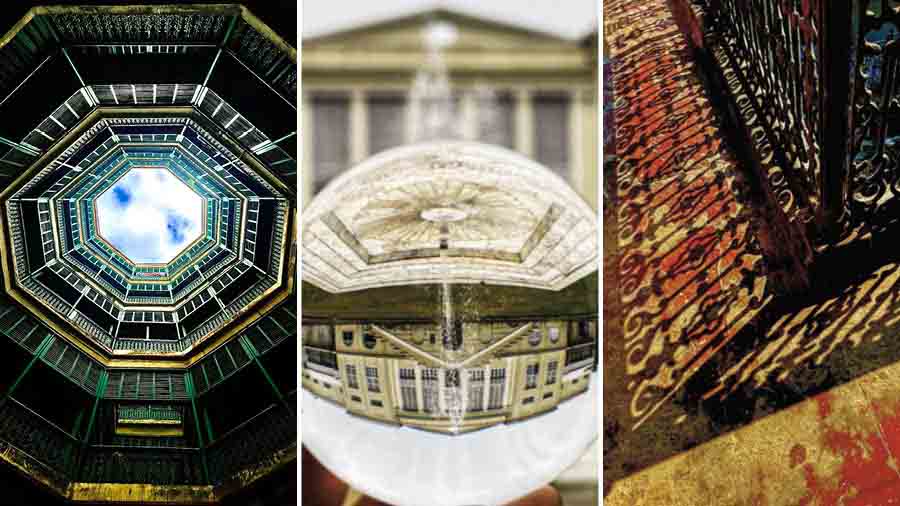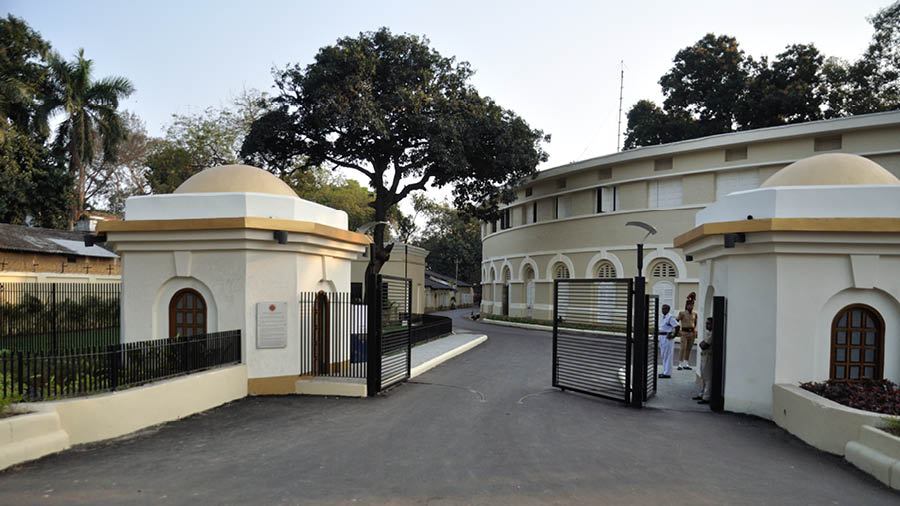Continued from here.
South Park Street Cemetery

This is possibly the least attended large publicly accessible premises on one of the toniest streets of Calcutta. For good reasons: it figures at the inconvenient eastern end of the artery, where it is unthinkable to park alongside and saunter inside (you might have to keep the next 150 minutes being expended at the Park Street Police Station); people don’t usually spend a lazy afternoon at a cemetery just for fun; people also need to read enough to decode the deception of marble plaques and geometric stone. If I were to guide Calcutta visitors to the angrezo ka qabrastaan, it would be to sit and reimagine: this was where the pride of the late 18th century expatriates eventually wound up after winning their wars and wealth but losing to the anopheles mosquito. The two mazaars I usually wind my way to in the cemetery corner: Charles ‘Hindoo’ Stuart for the oriental architecture of his maqbara, which tells me that there were a sizable angrez of the day who had been so extensively Indianised that they carried that identity to their graves (literally). The other qabr is of Henry Louis Vivian Derozio (HLVD hence). The Bengal Renaissance, so it is claimed, started with him; he was such a cult within the Hindu School faculty that I imagine that students imitated every accent he professed or tailed him wherever he went; the irony was that he was ‘rusticated’ from the college; before he left the institution at 22, he had seeded an entire generation with the fiery concept of intellectual baghaavat, so much so that scores of families regretted sending their succession line to Hindu School. Decades later, celebrated Bengal teachers would spend decades in creating an ‘influence’; here was someone who seeded generations with that indelible Bengali radical 'maverickness' in only five years of teaching. If you think that all this would have been forgotten in 2023, step inside to see how HLVD still lives (he died at 22 in 1831) you will find more flowers on his marble plaque than all the other graves combined; you will find couples selfie-ing against his bust pouting their lips and the other day I saw a 19-year-old do sujood, touching his forehead to the marble edge. I asked where he had come from. He replied in one word: ‘Presi!’
Baranashi Ghosh Lane
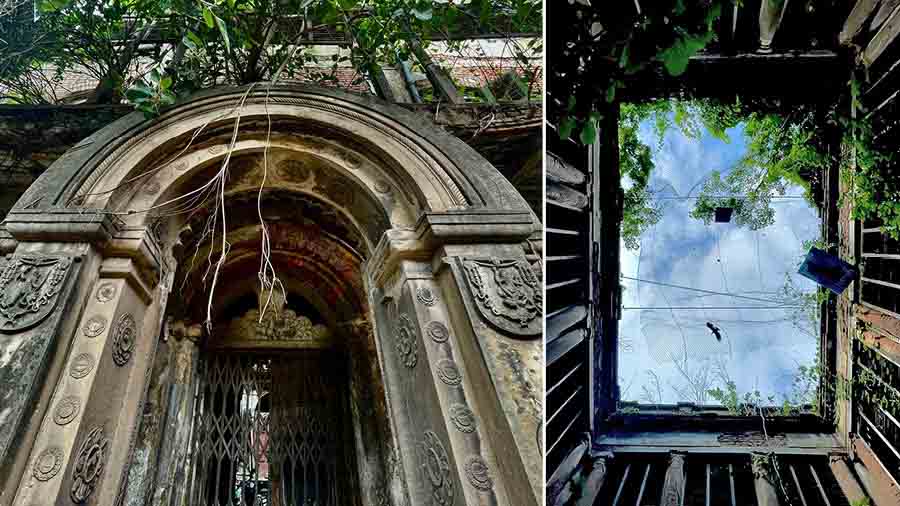
If it had not been for Google Maps, it would have been an exercise telling you where this lane is located. Let me explain it in a via-via way. Stand with your back to the Marble Palace. You will see a lane in front. Walk inside. Keep walking 100m. You will pass a lady pasting idli ka ghol (that’s how my missus refers to it) in cup after cup as the tray deftly rotates around her supporting fingers. Keep walking, you are safe. The lane curves to the right. You will find Munna the chaiwala on your right near the curve. He is the unofficial ambassador of the most compelling heritage structure on the lane. He doesn’t say a word (genetically incapable), but he uses excited semaphore to get you to walk 100 feet further. Where you come across one of the most compelling facades in the city (ties with the Pathuriaghat Venus in my book). A parabolic stone doorway. Etched with zodiacal references. I interpreted a ‘panchang’ (horoscope chart) on the pillar. If the upper archway were to be cleaned, we could get the nearest to Indianised hieroglyphics communicating some mystical secret of buried treasure (possibly). If you walk inside, I recommend that you stand at the precise mid-point of the courtyard, raise your phone camera, exercise the ‘0.5’ (iPhone jargon), wait for a passing crow - and shoot. This place has got me terribly curious: who owns it; would that person be keen to restore the façade from the crumbing-ly antiquated to the presentably antiquated; could we reinforce the pillars from toppling over. Question, questions. But one day, don’t be surprised if…
General Post Office
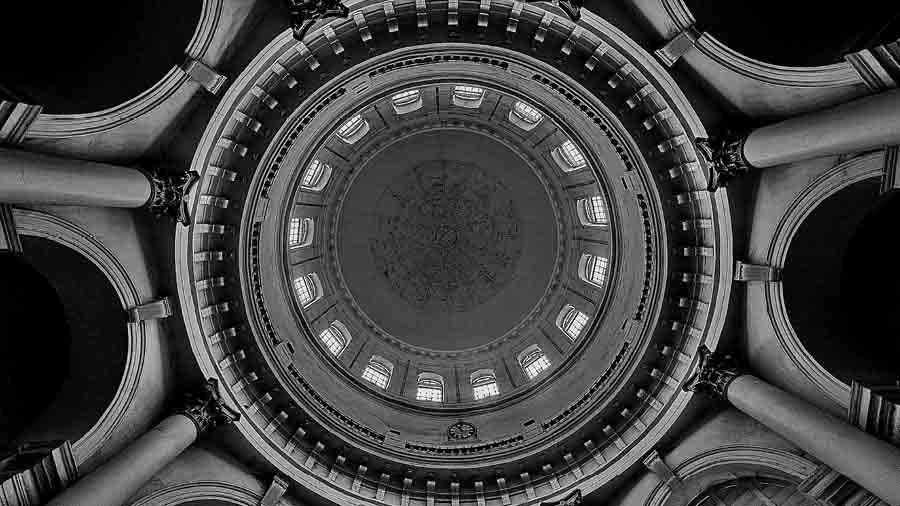
It is not the baaharwala picture that is the draw for me. It has been so extensively over-used that all the magic has been squeezed dry (unless I were getting a reflection off a puddle, car bonnet or car side window after it has rained). The magic lies inside: under the grand dome. If you shoot from the uppermost gallery downwards, the centrepoint vantage is lost and you get a skew. So take a brief correspondence course: get into the centre of the golghar, exercise your ‘0.5’, get complete symmetry on all sides, shoot, desaturate the image (my arrogant jargon for ‘turn the picture into black & white), reduce the light, increase the contrast and add some vignette (all iPhone jargon again). I would do this time and again to sharpen my visual aesthetics just like going to the gym to pump iron, but for an impediment: one needs to write a letter to the burra babu at GPO, seek written permission in triplicate and deposit Rs 500 before being permitted inside. We have a tourism driver sitting on our doorstep (‘Lokkhi!’) and we have invented ways of turning her away. I can’t believe that the GPO’s aamdani from these shooting fees would gross more than Rs 10,000 a year, and yet.
Tagore Castle staircase
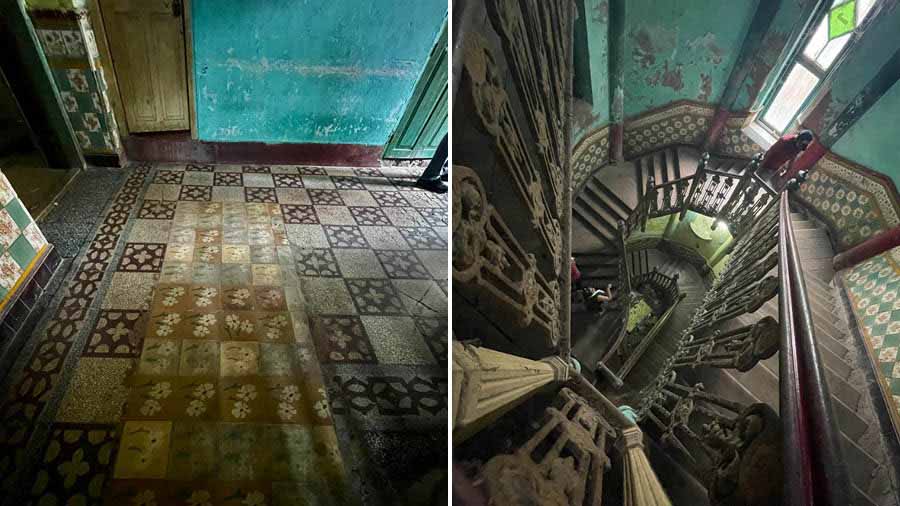
If you should go to Prasanna Kumar Tagore Street off Chitpur, there is a chance that you may see a brick-exposed castle-like structure (modelled around Windsor Castle) with a defunct clock in the middle. If you seek to emotionalise your visit, I suggest you draw a picture down from the internet, compare with what you are left with (the gardens have been replaced by a driveway to boxed apartment buildings), sit somewhere and ask for a stabilising refreshment (mineral). When you have regained composure, walk into the castle tower (after placating the gateman with an adequately submissive ‘Ektu please dekhey aaschi’). The climb through to the second floor is a ‘tour’ in itself. I won’t bore you with who owned this, who built it, who owns it. I won’t waste your time describing it either; see the picture with this article and get the drift. I have an ambitious idea: I have written a note to the owner and volunteered to put down a slice of my meagre savings to clean the staircase of paan-stains, burnish the banisters and polish the floor. Waiting for a reply.
Jorabagan Police Station
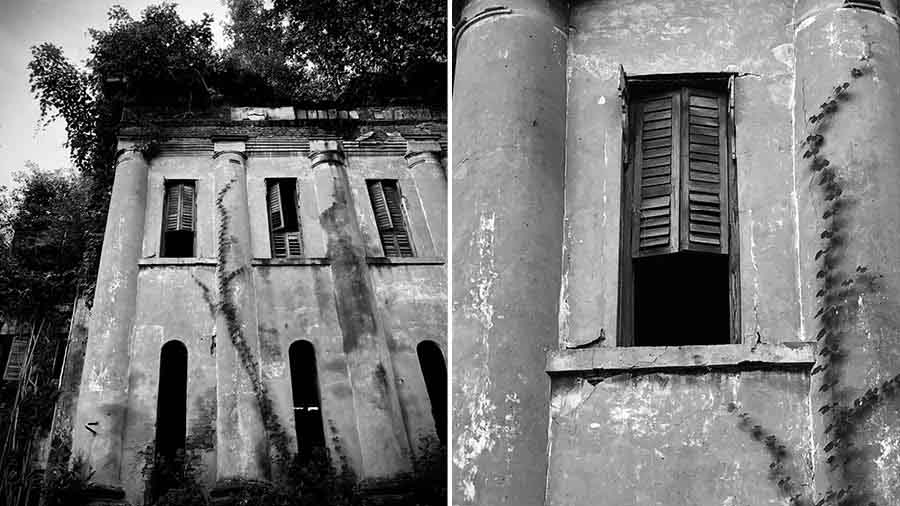
When someone asks to be shown the khandahar of this magnificent city, I tell Jhaji, my driver: ‘Sovabazar Street!’ JPS is not a structure; it is an experience. The scale of the structure. The ceiling altitude. The staircase grandeur. The vertical windows. The dull light brown of the walls. The extensive decay. One of these days, I intend on taking a young maiden with large eyes in a white sari with a red border, free flowing hair and alta on her feet to just walk gingerly through the premises with her pallu trailing behind while I pursue her with my iPhone. Would make a good story if I convert the pictures to black and white and curate a narrative of a lost soul in search of her roots. Could even make a film. Why seek golden forts in Jaisalmer when I could drive down to Sovabazar Street to make it happen? Even the mansion says ‘Bipodjonok’ as per a yellow KMC board. Risk worth taking. If it hasn’t fallen in 100 years, the law of probability is on my side.
To be concluded.

